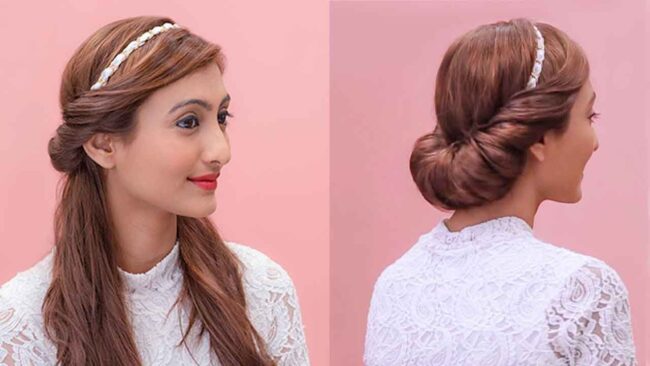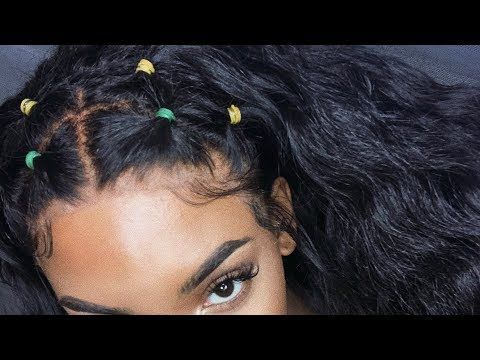Hair and music are more connected than they appear at first glance. When you think of your favorite band, you probably don’t just remember their soun
Hair and music are more connected than they appear at first glance. When you think of your favorite band, you probably don’t just remember their sound—you picture their image. Their clothes, their stance, their style—and yes, their hair.
Whether it’s a messy mop of curls, a sculpted mohawk, or dyed neon spikes, band hairstyles have always been more than aesthetics. They’re often the first visual cue that tells you who a band is, what they stand for, and what kind of sound they bring. Let’s explore the history, impact, and enduring power of band hairstyles as part of music and identity.
What Makes a Band Hairstyle Iconic?
An iconic band hairstyle doesn’t happen by accident. It must check several boxes:
- Recognition: You can spot the hair and know the band.
- Relevance: It matches or enhances the band’s genre and sound.
- Rebellion or Statement: It challenges norms or reinforces an identity.
- Reproducibility: Fans can (and often do) copy it.
It’s no coincidence that some of the most successful bands in history have also had the most recognizable hair.
Hair as a Stage Costume
For performers, the stage is a place of transformation. Just as musicians rehearse their songs and polish their outfits, their hairstyles are designed to create emotional impact. Whether it’s part of a broader aesthetic or a radical act of self-expression, band hair is visual music—a kind of silent song that introduces you before a word is sung.
A Decade-by-Decade Look at Band Hairstyles
1950s: Slick and Structured
In the early rock ‘n’ roll era, the look was clean-cut but rebellious. Think Elvis Presley’s pompadour or Buddy Holly’s tidy side part. The slick, greasy style challenged conservative grooming standards and introduced youth rebellion in a subtle, seductive way.
1960s: The Mop Tops and Mod Styles
The Beatles revolutionized men’s hairstyles with the mop top: bowl-shaped, cheek-length, and boyish. In contrast, The Rolling Stones grew their hair long and wild, embodying a more raw rock spirit. For women in bands like The Ronettes, teased beehives and voluminous curls became the defining look.
1970s: Hair Freedom and Volume
From Fleetwood Mac’s Stevie Nicks’ flowing waves to Led Zeppelin’s Robert Plant’s golden curls, the 1970s were about hair as freedom. Hair was worn loose, long, and wild—rejecting conservative ideals. At the same time, disco and funk bands embraced afros and precision-cut looks with style and pride.
1980s: Bigger, Wilder, Louder
Welcome to the decade of hair metal. Bands like Poison, Whitesnake, and Van Halen teased their hair to the heavens with mousse, spray, and heat. At the same time, punk bands like The Exploited or The Misfits went in the opposite direction—favoring shaved sides, bright dye, and spikes.
This was also the era of gender-defying hair, with artists like Boy George and Annie Lennox leading the charge.
1990s: Rebellion Goes Quiet
After the flashy ‘80s, the ‘90s scaled things back. Grunge bands like Nirvana, Pearl Jam, and Alice in Chains embraced greasy, undone hair as a rejection of vanity and artifice. Their hair wasn’t styled—it was lived in.
Meanwhile, R&B and hip-hop groups like TLC, En Vogue, and Destiny’s Child introduced braided, twisted, and natural hairstyles to the mainstream, emphasizing versatility and cultural pride.
2000s: The Scene and Emo Explosion
The early 2000s were defined by scene culture, and bands like Paramore, Fall Out Boy, and Panic! At the Disco made their mark with razor-cut layers, side-swept bangs, and bold colors like jet black, fire red, and cobalt blue.
Hair became emotional armor—something to hide behind, scream through, or dye in the color of your mood.
2010s–2020s: Fusion and Fluidity
The modern era doesn’t play by the rules. K-pop groups like BTS, Stray Kids, and TWICE change hair colors as often as album concepts. Western indie bands mix 70s nostalgia with 2020s flair. Gender fluidity is embraced through buzz cuts, undercuts, braids, buns, and everything in between.
Hair now shifts with digital identities, genre-bending, and global aesthetics. It’s more individual than ever—but still, bands lead the way.

Cultural Significance of Band Hairstyles
1. Identity and Belonging
Fans often adopt the hairstyles of their favorite bands to feel connected. Emo fans cut choppy bangs. Metalheads grow long hair. K-pop fans dye their hair in matching shades.
2. Resistance and Rebellion
Punk hair wasn’t just about fashion—it was political. Mohawks, liberty spikes, and dyed cuts pushed back against societal expectations.
3. Cultural Representation
Afros, cornrows, dreadlocks, and braids in music groups carry cultural weight and celebrate heritage—especially in Black and Afro-Caribbean music scenes.
4. Transformation and Evolution
Artists often signal a new era with a new hairstyle. When a band changes its sound or brand, a new haircut almost always follows. Think: Hayley Williams’ orange-to-pink transition during Paramore’s evolution.
Hairstyle Symbolism in Famous Bands
| Band | Hairstyle | Symbolism |
| The Beatles | Mop tops | Youthful rebellion, unity |
| Nirvana | Messy waves | Anti-fashion, authenticity |
| My Chemical Romance | Dyed black/red fringe | Emotional vulnerability |
| BTS | Rotating pastel dye | Versatility, artistic reinvention |
| KISS | Big wigs & face paint | Performance art, fantasy |
| Green Day | Spiked dyed cuts | Punk roots, political edge |
| Blackpink | Stylized layers, vibrant colors | Power, femininity, style fusion |
How Fans Imitate Band Hairstyles
Fans go to great lengths to replicate their idols’ looks:
- DIY Dye Kits: Emo and scene kids often experiment with box dyes.
- Barber-Inspired Cuts: Rap and hip-hop fans follow fade and pattern trends from music groups.
- Wigs and Extensions: K-pop and cosplay fans use wigs to mimic dynamic styles.
- YouTube Tutorials: Entire channels are dedicated to copying band looks.
This imitation isn’t just about style—it’s about identity, participation, and admiration.
Band Hairstyles and Social Media
In today’s world, a hairstyle can go viral overnight. A band member debuts a new cut on TikTok or Instagram, and suddenly thousands are trying it the next day.
Social platforms accelerate hair trends, making band influence more direct than ever. What was once a look reserved for concerts or album covers is now globally accessible and immediately reproducible.
Tips for Getting a Band-Inspired Hairstyle
Here’s how to bring band energy to your own hair:
1. Choose Your Era
Are you into ’70s rock or 2000s scene? Your reference point sets the tone.
2. Match It to Your Texture
You don’t have to straighten curly hair or curl straight hair—adapt styles to suit you.
3. Start Subtle
Try temporary dye, wigs, or clip-in bangs before committing.
4. See a Pro
For dramatic styles (asymmetry, color blocks, sharp fades), visit a stylist with experience in editorial or alternative looks.
5. Make It Your Own
Don’t copy exactly. Use band styles as a foundation, then customize based on your face shape, lifestyle, and comfort level.
FAQs About Band Hairstyles
1. Are band hairstyles only for young people?
Not at all. Band-inspired hair can be adapted for all ages. Many older musicians and fans proudly wear long hair, dyed looks, or bold cuts. The key is confidence and personalization.
2. What if my job doesn’t allow wild hairstyles?
You can still adopt band looks in subtle ways—like a bold undercut that hides under longer layers, temporary colors, or styling techniques that don’t involve dye or cuts.
3. Which bands have the most versatile hairstyles?
- BTS – Known for constant hair changes.
- Paramore – Hayley Williams changes colors and cuts with every era.
- David Bowie – Reinvented his look throughout his career.
- Lady Gaga (in band collabs) – Uses wigs and headpieces as performance extensions.
4. Do hairstyles really matter in a band’s success?
While not the sole factor, appearance—including hair—plays a significant role in creating a band’s visual identity. It helps with memorability, branding, and fan engagement.
5. How do I style my hair like my favorite band member?
- Look for clear photo references from multiple angles.
- Watch interviews or styling videos.
- Take screenshots and show them to your stylist.
- Use styling products that fit your hair type—what works for one texture won’t work for all.
Conclusion: Hair as an Anthem
Band hairstyles are more than looks—they’re movements, memories, and messages wrapped in strands of keratin. They tell the story of who we are, what we resist, and how we feel. Whether you’re rocking messy punk hair, polished pop waves, or DIY dye jobs from your bathroom mirror, you’re part of a legacy that connects music and self-expression.
Hair doesn’t sing—but in the world of bands, it still speaks volumes.
More Info: onlinemrkting




COMMENTS